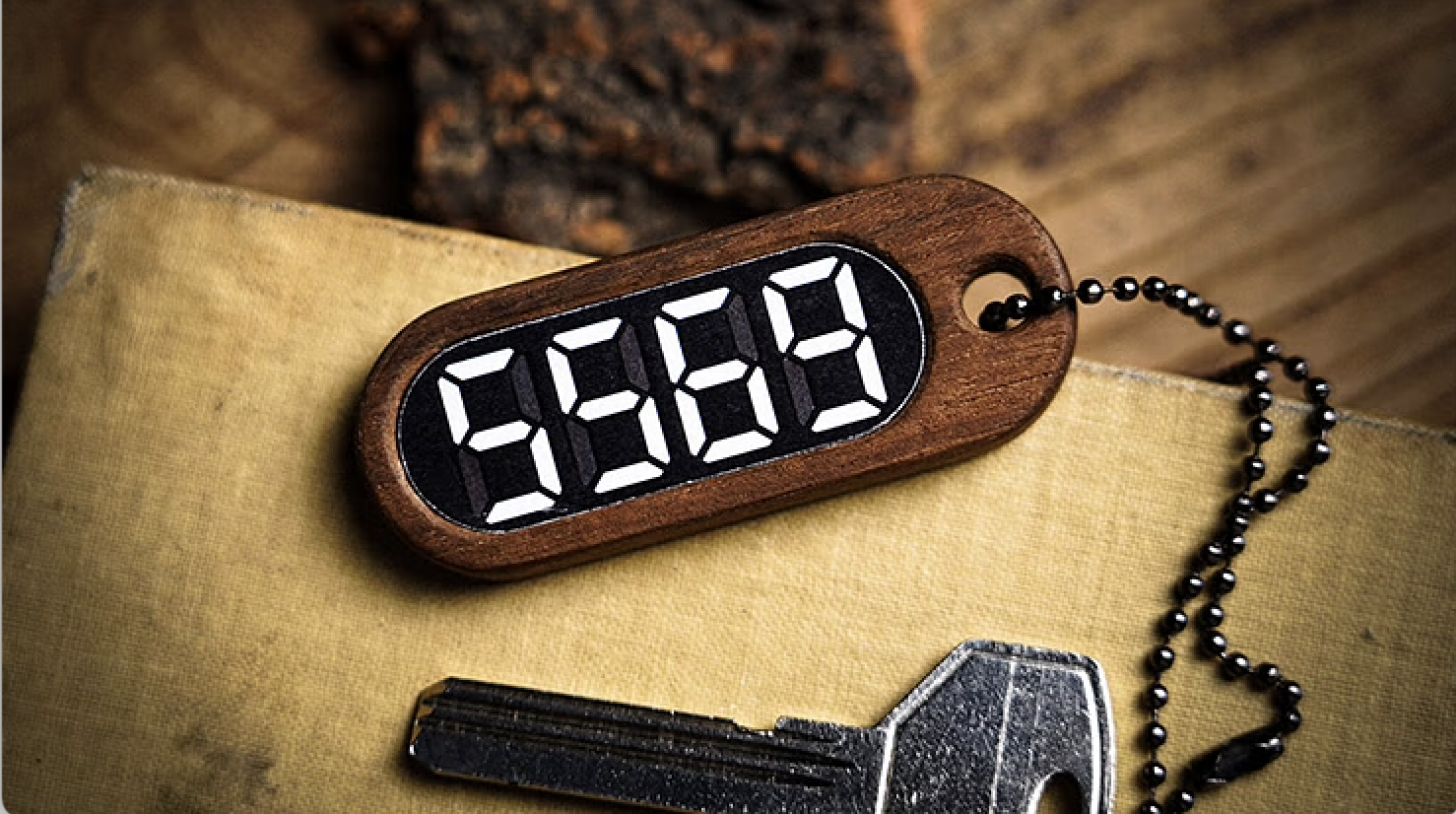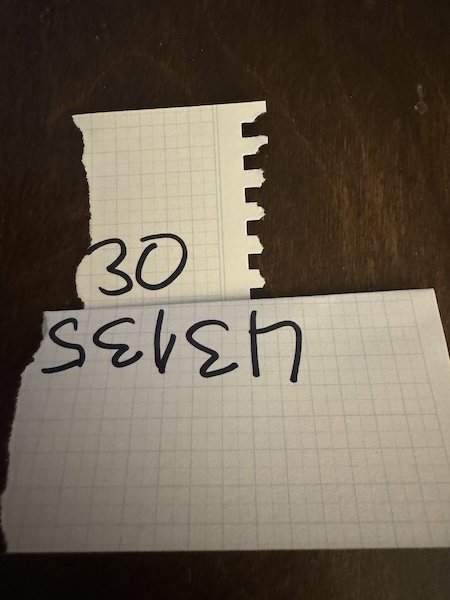I’m taking this email slightly out of context. I’m intepreting the question more generally than it was asked. The basic idea is how to approach people for help when you’re testing out new tricks or techniques.
If I'm to have a friend or three selected especially for this task provide discrete and prompted feedback on individual magic tricks, what excuse do you think I should use to avoid the real reason?
I'm thinking that I'll just say that I'm part of a secret society that values actual feedback […] and I've been enlisted to test some of the creations of the society out on them.—JN
I don’t have one approach to this, so this is going to be a mishmash of thoughts and ideas.
Identifying good “test subjects”
To me, one of the joys of amateur magic is finding my ideal audience. That is, finding people who not only like watching magic but also enjoy losing themselves in weird experiences. I don’t force this sort of thing on anyone who isn’t into it. There’s no pleasure in that for me. That’s another problem of magician-centric thinking. “I like to do magic. And you’re someone I know. So you’re going to have to watch me do the type of magic I want to do.”
The feeling I get seeing many amateurs perform for people is the same feeling I get seeing a six-year-old pester his mother at the public pool. “Mommy! Mommy! I can dive. Hold on. Look mommy. I’m going to do a BIG DIVEY!” And then he goes and flings his dumb little body into the water, coming up moments later, flailing and sputtering. “Did you see? Mommy? I did it mommy, did you see? Did you see my dive?”
“Yes,” she says, as she stares into the novel she’s reading. The one featuring a woman who doesn’t have a kid constantly begging for her attention. The only person wanting that woman’s attention is the guy she just met. The one with the shredded abs and the new little shop in town where he sells his home-made pastries. “Yes, sweetie. Great job. Let mommy read now.”
I never want that needy vibe when I perform. So I’m always focusing on building my audience by giving people a peek at the type of stuff that fascinates me and then moving forward with the people who are genuinely intrigued by this sort of thing.
When it comes to performing for people who are going to be in my life regularly, I start to categorize them regarding their appreciation for the type of magic I want to do.
There are fans, and there are superfans. They make up my core audience.
There are people who are purely anti-magic. They just can’t appreciate it on any level. I’m not going to bother with these people. (Unless I feel like torturing one for some reason.)
Then there is a final group that likes magic somewhat, and they’ll ask me about it from time to time. But they’re incapable of letting it truly affect them. It may be because they know a bit too much about magic and how it’s done. Or it may be because they’re just too guarded. Whatever the case may be, I’m not going to waste a truly special presentation on them. But they do make good test subjects when you’re looking for people to take a more analytical look at magic.
Two Things Worth Testing
#1 Sleights
I don’t learn too many new sleights these days, but when I do, I usually try to test them out in some form. You might think you could ask another magician if you’re flashing or if the sleight looks good. You can’t. They’re just as blinded as you are. And they want to believe that something looks normal, and fooling.
Instead, you want someone who doesn’t know what they’re looking for.
I like to test new sleights with zero heat, and then with 100% full heat. Knowing that when I perform them for real, the heat will likely be somewhere in the middle.
For example, let’s say I was learning a second deal.
— Zero Heat Test
“Can you help me out? I’m going to deal some cards into different piles. Will you make a note of how many I deal into each pile?”
They would watch me deal out some cards, and then make a note of how many I dealt.
What I’m actually doing is second-dealing on every deal, or on some particular deals.
There’s no heat on this. I’m just asking them to help out with some sort of administrative task. I’m just looking to make sure that they don’t say something like, “Why are you dealing in that weird way?” Assuming that doesn’t happen, I can feel confident knowing the sleight is at least somewhat workable.
— Full Heat Test
“I’m going to deal twenty cards onto the table and count them out as I do. On two of the cards, I’m going to deal in an unusual way. I want you to try and spot when I do and remember what number I called out when I did it.”
Let’s say I deal out 20 cards and I second deal on cards 8 and 11.
I now ask them which cards I did something weird on.
I’ll get one of three responses:
Totally Unsure - “I don’t know. It all looked the same to me.” Great. That means I can probably use the sleight freely with no worries.
Totally Sure - “You did something funny with cards 8 and 11.” Okay. That doesn’t mean the sleight is worthless. Or that doesn’t mean the sleight is unusable. It just means I’ll want to give it some more practice and not use it in circumstances where there is a lot of heat on the dealing itself.
Somewhere in between - “I don’t really know. I thought I spotted something in the middle there. Maybe around 10 or 11?” This is fine. This tells me it’s a usable sleight and as long as I’m not telling them to specifically focus on the cleanliness of whatever action I’m taking, it will most likely fly by them.
I always try to test sleights and moves outside the context of a trick. Most people want to be nice when you’re showing them a trick. But if you say, “Watch me cut this deck of cards 10 times, and tell me if you see anything odd,” then they’ll feel no need to be nice.
You can see why this type of testing is great for someone who is analytical and happy to help. But you wouldn’t want to use someone who’s willing to really “dance” with you in more magical ways. Don’t waste their time.
#2 Suspicion and Transparency
The other thing worth testing is how suspicious or transparent a trick or the deceptions used in a trick are.
If people are suspicious of something, and you can’t allay those suspicions in any way, then it doesn’t matter whether those suspicions are true or not, the impact of your trick will be greatly reduced.
For this type of testing, I need to present the trick to people in some way, but I don’t always perform it for them.
Often I will just describe the trick for people. Other times I will show them a video of someone else performing the trick.
Then I can just play dumb. “Do you have any idea how someone could do that?”
Now I listen for their responses. Are they focusing on the exact method simply by hearing about or watching the trick? That tells you if the method is transparent, or if there’s something they would naturally be suspicious of.
When Leviosa came out, we tested it by putting a demo video in front of 47 non-magicians. 100% of them were suspicious of the deck. I don’t have to now buy the trick and perform it myself to know that this is something that’s not going to work for my performing situations. And you don’t need a 47-person virtual focus group to test this on. You could show the demo to three or four people and try and get their earnest thoughts on how it might be done, and if you have most or all of them being suspicious of the deck, you can be pretty certain that’s what you’ll have if you performed it in real life too.
I have a friend who was interested in a recent iPhone trick where the spectator would type something in your Notes app and whatever they typed would be revealed on your phone in some manner (I don’t remember the details). Before buying it, he decided to test it out by describing this trick “someone showed me” and then asking his friends if they had any idea how it could have been done. The majority of the people he asked said that it was probably some trick with the phone—some kind of app or something. It wasn’t an app (I think it was a shortcut) but really, what’s the difference as far as the spectator is concerned?
And this is all the type of testing that can be done without actually performing.
Approaching Test Subjects
When testing out a trick, you really need to frame it as if you’re doing it on behalf of someone else. Most people aren’t comfortable giving their friend or loved one honest feedback. If they were, you’d never need to test anything. You could just perform and people would say. “I believe the card was in your hand before you put your hand in your pocket.” But most people aren’t going to call you out like that, even if you indicate that you’d like them to.
As I’ve mentioned in the past, the story I tell people if they’re someone I’m going to be testing tricks out on regularly, is that I’m a member of this group of magicians that helps test out new tricks, to give feedback to the creators. This allows me to ask very direct questions after the trick is completed, as if these are just the questions I’ve been tasked with getting answers to.
This is similar to what the email-writer is considering. But I don’t call it a “secret society” or anything like that. (I use talk of “secret societies” in my “real” presentations. But not for these purposes.) I intentionally make the thing seem as dull as possible. This is one of the more boring aspects of my interest in magic. It’s just this thing you can sign up for if you’re part of one of the regular magic organizations and they’ll send you tricks from time to time as long as you give your test them out and give feedback. The testing group is run by these guys.









